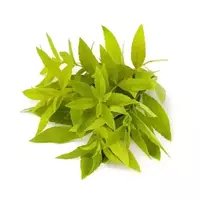Verbena lemon

In historical books, lemon verbena can be found under other names, including bee bush and lemon Louise. By the way, the last name was given to the plant in honor of Princess of Parma Maria Lisa, who later became the Queen of Spain herself. The word Verbena itself is translated from Latin as a branch with leaves, while Aloysia triphylla (the species name of the plant) can be translated as having the smell of lemon.
There is no exact data on the appearance of this plant in Europe, but there is an assumption that lemon verbene was introduced here by the Spaniards back in the 18th century. Moreover, almost immediately this aromatic plant began to be used in perfumery. And today it is used by some well-known global brands.
Back in the early 20th century, verbena adorned and saturated European gardens with its delicate citrus aroma. Recently, decorativeness has changed the use of lemon verbene, mainly as essential oilseed raw materials. So, significant plantations of this plant are found in the countries of North Africa, the USA, Madagascar and in the south of France.
In homeopathy, the beneficial properties of lemon verbene are quite widely used, where it is used as a natural gastric and stimulating agent. In addition, the valuable properties of lemon verbene, which are due to the composition of this plant, are contained in its mild sedative effect.
However, it is worth noting that for culinary purposes, lemon verbena, unfortunately, is not used too often. This is probably due to the fact that this fragrant grass requires a special purpose in the choice of accompanying seasonings and dishes. Meanwhile, the aroma of lemon verbena is much richer and fresher than other herbs with a similar smell. Most aromatic oils are present in lemon verbena flowers and leaves, and somewhat smaller in its shoots.
Verbena lemon is remarkably combined with products such as strawberries, some types of cheese, fish and poultry. In addition, it is good as an aromatic additive in the composition of marinades and sauces. Different jams, souffles, creams, mousses, jellies, sorbets and puddings always acquire a special aroma and taste if dried leaves of lemon verbena are added to them.
In addition, lemon verbena can become a worthy companion seasoning for seafood and meat dishes. For example, apple sauce seasoned with garlic and verbena leaves is perfect for pork ham or turkey. By the way, due to the ability to perfectly preserve the original aroma, lemon verbena leaves in dried form are often included in herbal teas, which are very popular in North Africa.
lemon verbenes 0 kCal
The energy value of lemon verbene (Ratio of proteins, fats, carbohydrates - ju):
Proteins: 0 g (~ 0 kCal)
Fats: 0 g (~ 0 kCal)
Carbohydrates: 0 g (~ 0 kCal)
 Español
Español Français
Français Português
Português Русский
Русский 简体中文
简体中文 繁體中文
繁體中文 日本語
日本語 한국어
한국어 العربية
العربية Türkçe
Türkçe Қазақ
Қазақ Deutsch
Deutsch Italiano
Italiano Українська
Українська
